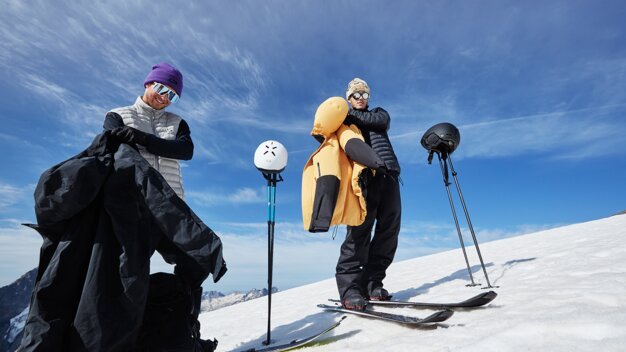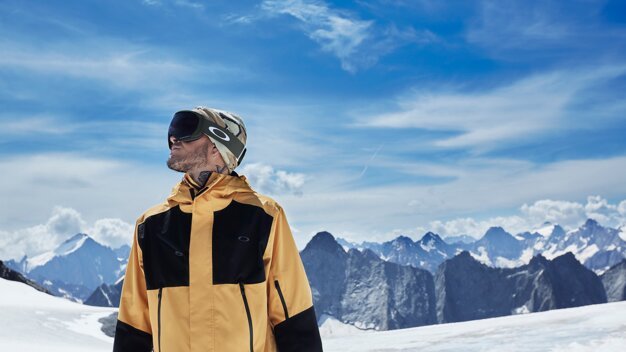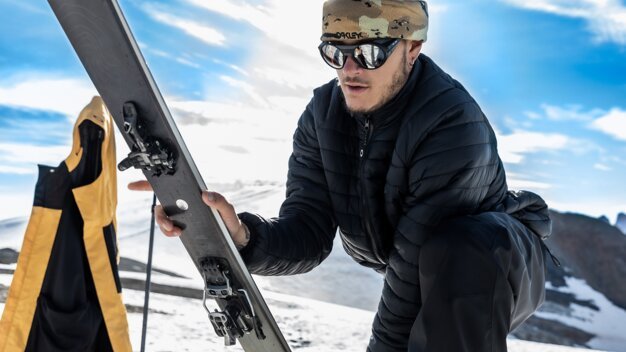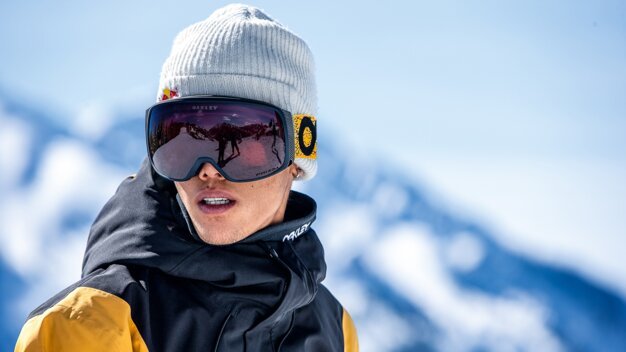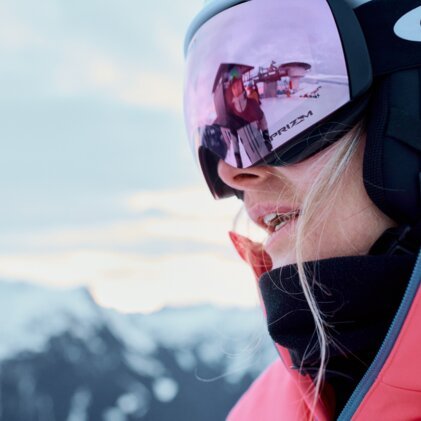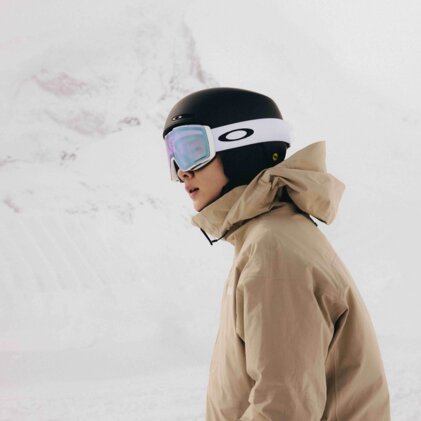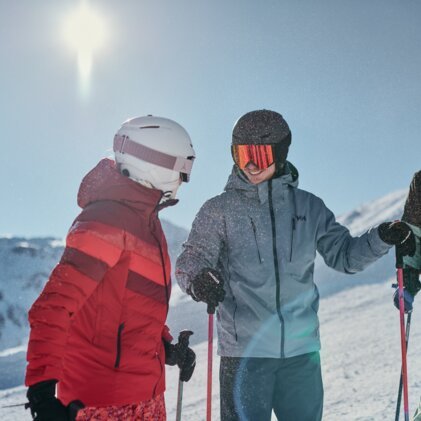
Are you planning to go ski touring next weekend? Then we hope you have packed a pair of top-quality sunglasses … And not just because they make you look cooler!
Sun protection is a major issue for ski tourers. Why do you need good ski goggles or glacier glasses for ski touring? And what are the best ski touring sunglasses on the market? Find out in our blog article and discover some useful tips by Oakley!
Why do I need sun protection while ski touring?
The answer is quite simple: Because very bright sunlight is harmful to your eyes – and the higher you go, the more intense the sunlight. As ski touring usually takes you up to higher altitudes, it’s particularly important to protect your eyes.
Snow reflects sunlight very strongly, and extreme UV radiation can damage the outer cornea of your eye. If your eyes are exposed to this radiation for a longer period of time without any kind of protection, this can cause snow blindness.
Keep in mind: Just because it’s cloudy, doesn’t mean your eyes don’t need protection! Snow blindness can also occur in cloudy or foggy conditions.
What’s better, sunglasses or goggles?
There’s no simple answer to this question. Many winter sports athletes favour ski goggles over sunglasses because they offer a wider field of vision and are generally sturdier. However, whether you should opt for sunglasses or goggles largely depends on the situation.
Ski goggles …
- … are more likely to fog up when you overheat.
- … are not as good as sunglasses in very bright conditions.
- … are too warm for uphill ski touring.
Sunglasses …
- … fall off easier.
- … don’t protect your face as well.
- … don’t keep your face warm.
Our tip: For classic ski touring we recommend sunglasses such as Oakley’s Clifden or Sutro. However, if you don’t hike uphill much, goggles might be the better choice as they offer more protection to your eyes and face. Alternatively, you can wear sunglasses during the ascent and ski goggles (e.g. Oakley’s Line MinerTM L or Flight DeckTM L) on your way down.
Can I use my normal sunglasses for ski touring?
Run-of-the-mill sunglasses usually don’t live up to the job when it comes to ski touring. Even special sports sunglasses don’t offer the degree of protection required for hiking in higher altitudes.
That’s because sports sunglasses usually have a VLT (Visible Light Transmission) of 30 to 60 per cent. The VLT value indicates how much light the lens will allow through. Special glacier glasses (heavily tinted sports glasses) on the other hand have a VLT of around 5 to 7 per cent. In addition, they provide up to 100 per cent frame coverage, allowing no light to penetrate from the bottom or sides of your glasses. That’s why glacier glasses can protect your eyes much better than standard sunglasses.
By the way: Glacier glasses are also available for ski tourers wearing prescription lenses.
What makes good glacier glasses?
For you to safely experience bluebird days in the snow, your glacier glasses should provide the following:
- excellent frame coverage
- a secure fit
- a VLT below 10 % (5 % for higher altitudes)
What about the lenses?
Glacier glass lenses are usually made of shatterproof, scratch-resistant plastic. Why not glass, you ask? Because plastic is lighter and poses less risk of injury.
The lenses of your glacier glasses are categorised by their filter class, referring to the transparency of the lens. Filter classes range from 0 to 4, with the latter featuring the strongest tint. Glacier glasses are usually class 4, making them suitable for high-altitude use.
Many glacier glasses feature anti-fog protection and/or polarised lenses, which eliminate harmful reflections from the ice and snow in high-alpine regions.
By the way: Glacier glasses with photochromatic lenses automatically adjust to changing light conditions. Alternatively, you can go for a model with interchangeable lenses. With Oakley sunglasses, all lenses can be changed.
Did you know?
Contrast and colour distortion play an important role in snowy landscapes. Especially in flat light conditions, contrasts can be difficult to detect. Oakley’s Prizm technology helps to enhance colour and contrast and allows you to see more detail.
… and the frame?
Go for a frame that …
- … is lightweight.
- … sits comfortably.
- … offers side protection.
- … has a non-slip strap for a secure grip.
INTERSPORT Rent tip
Ready for the next bluebird day in the mountains? If your ski touring setup is not complete yet, we recommend a visit to INTERSPORT Rent. Why? Because at our more than 800 shops in Europe and Canada you can find a large selection of latest-generation ski touring equipment for rent.
Whether you’re looking for touring skis, accessories or top-quality sportswear – all of it and more is waiting for you at INTERSPORT Rent. Our RENTertainers on site will be happy to show you the best products for your needs!
Related articles
You may also be interested in:
